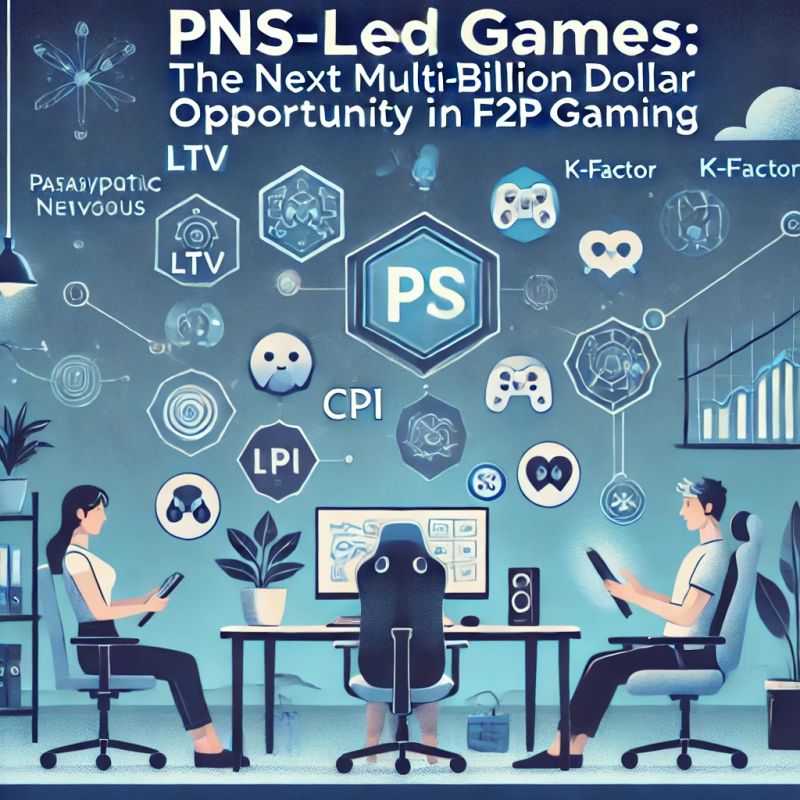About the author
Antti Kananen
Seasoned entrepreneur, executive, director, general manager & project/product lead bringing innovation, technology, startups and games to life!

Journal 33 Antti Kananen November 1

The #F2P #gamingindustry has become commercialized, but many commercially driven #games may not stand the test of the time. The future opportunity lies in the physiological aspects of #gaming through Parasympathetic Nervous System (PNS)-led #gamedesign. Unlike traditional SNS-led games that stimulate e.g., the “fight or flight” response, PNS-led games focus on e.g., social connection, and meaningful #engagement, creating spaces where players can enjoy the experience without the intensity of SNS-led #design.
🚀 Why This Matters for KPIs: Lower CPI, Higher LTV, and Stronger K-Factor.
PNS-led games address core needs, not just symptoms. By creating experiences rooted in e.g., genuine connection, they attract and retain players in ways that drive #KPIs and scalable #UA:
1. Reduce #CPI by appealing to a broader audience looking for #socialengagement, resulting in better efficiency.
2. Increase #LTV Through Healthy #Monetization: Regular F2P monetization relies on urgency, scarcity, or paywalls, which can create anxiety and fatigue. A PNS-aligned approach can build LTV by enhancing positive, voluntary spending that feels like a natural part of the core rather than an imposed necessity. For instance:
i. #Microtransactions for Connection: Rather than spending for competitive advantages, players can spend on options to personalize and enhance social interactions — such as exclusive in-game events, cooperative missions, or customization features that make #gameplay uniquely theirs.
ii. #Subscription Models for Holistic Engagement: Offering subscriptions that promote social features, new content, or co-op progression aligns with players’ desire to invest in fulfilling experiences.
iii. Rewarding Long-Term Engagement: PNS-led games can design monetization around loyalty, e.g., offering incremental rewards that grow as players build longer relationships with the game.
3. Enhance K-Factor, as players naturally recommend games that promote connection.
i. Social core, as designed into a game, also boosts K-Factor.
🔮 Generational Shift: #GenZ & #GenAlpha Demand Connection and Co-Op Play
With Gen Z and Gen A leading a shift in social preferences, the future is in experiences that support these generations’ desire for cooperative, socially enriching environments. They’re increasingly resistant to high-stress, SNS-driven products, instead gravitating towards titles that prioritize social connection and co-op — traits core to PNS-led design.
Imagine a future where the #F2Pmarket moves beyond “play to win” to “play to connect,” driving both player satisfaction and industry revenue. With PNS-led games, we’re looking at the next potential multi-billion dollar growth sector, aligning with the physiological and social needs of players who prioritize connection, and authentic gameplay.
#GameDev #VideoGames #MobileGames #GamesIndusty #GameIndustry #GameDevelopment #EconomyDesign
About the author
Seasoned entrepreneur, executive, director, general manager & project/product lead bringing innovation, technology, startups and games to life!
Please login or subscribe to continue.
No account? Register | Lost password
✖✖
Are you sure you want to cancel your subscription? You will lose your Premium access and stored playlists.
✖